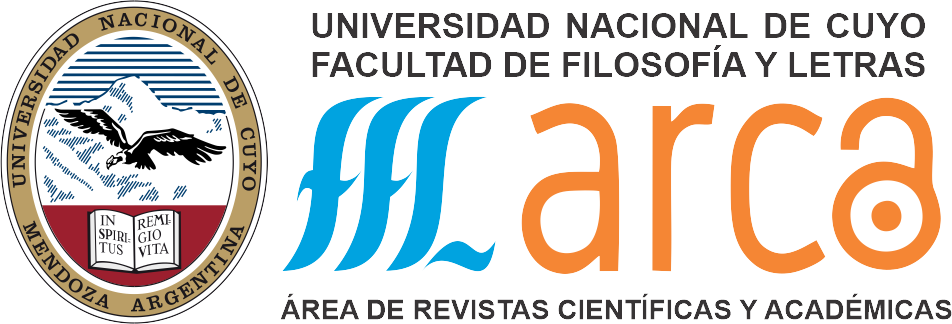The "New Slavery"
An Approach from Climate and Environmental History
DOI:
https://doi.org/10.48162/rev.48.075Keywords:
Slavery, Climate Change, Migrations, Anthropocene, GovernanceAbstract
In this work, an approach to the “new slavery” is proposed in order to identify the features that make it unique and differentiate it from previous forms of slavery. The purpose is to understand the causes of such a social phenomenon and the main dimensions it acquires in its current form. The analysis of the new slavery takes the perspective of climatic and environmental history. The main argument maintains that international organizations recognize that the most frequent contemporary forms of slavery or quasi-slavery refer to forced labor, debt bondage, conscription for war, and sexual exploitation. In recent years, the consequences of climate change have been added, since this complex and multifaceted macro process characteristic of the Anthropocene era, deepens the situation of individuals and social groups, acting as a driver of vulnerability. In particular, it is proposed that the link between climate change, migratory displacements and new forms of slavery could only be overcome if international cooperation mechanisms are established to combat the effects of climate change. This dimension facilitates reflection on the challenges presented by the historical situation and allows us to rethink the problems of international and regional cooperation for development.
References
Aristóteles (1981). La Política. Editora Nacional, Madrid.
Allier Montaño, E. (2018). “Balance de la Historia del tiempo presente. Creación y consolidación de un campo historiográfico”, Revista de Estudios Sociales 65: 100-112.
Anker, C. van den (2014). The Political Economy of New Slavery. Palgrave MacMillan.
Bales, K. (2005a). Understanding Global Slavery: A Reader. University of California Press.
Bales, K. (2005b). New Slavery. ABC-Clio.
Bales, K. (2016). Blood and Earth: Modern Slavery, Ecocide, and the Secret to Saving the World. Penguin Random House.
Bales, K and B. Sovacool (2021). “From forests to factories: How modern slavery deepens the crisis of climate change”, Energy Research & Social Science 77, pp. 1-9.
Bárcena, A. (2018), La Agenda 2030 y los Objetivos de Desarrollo Sostenible.Una oportunidad para América Latina y el Caribe. CEPAL.
Benedict, K. (2002). “Global governance”, in International Encyclopedia of the Social & Behavioral Sciences. Elsevier, pp. 6232-6237.
Bharadwa, R. et al. (2021). Climate-induced migration and modern slavery: a toolkit for policymakers. Anti-Slavery/International Institute for Environment and Development.
Bolin, B. (2007), A history of the science and politics of climate change: the role of the Intergovernmental Panel on Climate Change. Cambridge University Press.
Brauch, H.G. et al. (2012). Climate Change, Human Security and Violent Conflict: Challenges for Societal Stability.Berlin. Springer-Verlag Hexagon.
Brüggemeier, F. (2001). “Environmental History”, Neil J. Smelser and Paul B. Baltes. (edit.). International Encyclopedia of the Social & Behavioral Sciences. Elsevier, pp. 4621-4627
Bruntland G. H.(edit,) (1987). World Commission on Environment and Development. Our Common Future. Oxford University Press.
Calcagno, D., Masera, G. y P. Baziuk (2018). “Transiciones socio-energéticas para el desarrollo social: un estudio sobre comunidades semi aisladas en el noreste de Mendoza”. Revista Tecnologia e Sociedade vol. 14, núm. Esp.32, 2018, pp. 122-137.
Cameron, E, S.L. Hemingway, F. Cunningham, K. Jacquin (2021). “Global Crises: Gendered Vulnerabilities of Structural Inequality, Environmental Performance, and Modern Slavery”, Human Arenas 4, pp. 391-412.
Carey, Mark. et al. (2014). “Forum: Climate Change and Environmental”, Environmental History, Volume 19, Number 2, pp. 281-364.
CEPAL (2019). Horizontes 2030: la igualdad en el centro del desarrollo sostenible. CEPAL.
Coelho, S. (2016). The Climate Change-Human Trafficking Nexus, Geneva, The International Organization for Migration (IOM), The UN Migration Agency.
Crutzen, P.J. and H-G. Brauch (eds.) (2016). Paul J. Crutzen: A Pioneer on Atmospheric Chemistry and Climate Change in the Anthropocene. Springer International Publishing.
Chakrabarty, D (2018). “Anthropocene Time”. History and Theory, Volume57, Issue1, March 2018, pp. 5-32.
Damodaran, V. (2015). “Environmental History”. J. D. Wright (edit.). International Encyclopedia of the Social & Behavioral Sciences. Elsevier. Pp. 747-755.
Dobrinka, N. and O. NIkolov (2023). Environmental Protection and Disaster Risks. Springer.
Eastman, Johnson. (1862). A Ride for Liberty—The Fugitive Slaves [Óleo sobre cartón]. Museo de Brooklyn, Museo de Bellas Artes de Virginia.
EEA (2017). Climate change, impacts and vulnerability in Europe 2016. An indicator-based report. Copenhagen: Den., European Environment Agency, EEA Report No 1.
Genovese, E. (1967). The Political Economy of Slavery: Studies in the Economy and Society of the Slave South. Vintage Books.
Gómez Martìn, C. y Malo, G. (2020). “Un recorrido por la literatura sobre refugio y desplazamiento forzado en América Latina y el Caribe. Abordajes principales y nuevos ejes críticos de estudio”. PÉRIPLOS, Revista de Investigación sobre Migraciones. Año 3, Número 2 (2019), pp. 04-21.
Greenspan Bell, R. (2015). “Addressing Multifaceted Challenges Climate Change and Global Trends in the Next Decade: Implications for U.S. National Security, Diplomacy and Development”. Conference: Global Trends in the Next Decade: Implications for U.S. National Security, Diplomacy and Development. Woodrow Wilson International Center for Scholars Conference Paper.
Hezser, C. (2005). 'Master-Slave Relationships', in: Catherine Hezser. Jewish Slavery in Antiquity. Oxford University Press, pp. 202-216.
Hellie, Richard (2023). "Slavery". Encyclopedia Britannica, 28 Dec. 2023, https://www.britannica.com/topic/slavery-sociology. Accessed 15 February 2024.
Hook, D. (2012). A Critical Psychology of the Postcolonial: The Mind of Apartheid. Routledge.
Hume, D. (1977). ‘On the Populousness of Ancient Nations’. The Philosophical Works of David Hume 3. Adam Black, William Tait y Charles Tait.
ILO-Walk Free (2022). Global Estimates of Modern Slavery: Forced Labour and Forced Marriage. International Labour Organization.
Jackson, B., et al, (2024). Realigning modern slavery and climate change policies for equitable governance and action. Modern Slavery & Human Rights Policy & Evidence Centre.
Kauffman, A. (2014). Capitalism, Slavery, and Republican Values: American Political Economists, 1819-1848. University of Texas.
Lamas, B. (2023). Modern Slavery in the Global Economy. In: Pargas, D.A., Schiel, J. (eds) The Palgrave Handbook of Global Slavery throughout History. Palgrave Macmillan, pp. pp 661-680.
Lieberman, B, and E. Gordon (2018). Climate Change in Human History. Prehistory to the Present. Bloomsbury Academic.
Lorey, D. (2002). Global Environmental Challenges of the Twenty-First Century: Resources, Consumption, and Sustainable Solutions. Rowman.
Marroni, M da G. (2016). “Escenarios migratorios y globalización en América Latina: una mirada al inicio del siglo XXI”, Papeles de trabajo. Cent. Estud. Interdiscip. Etnolingüíst. Antropol. Soc., no.32, pp. 126-142.
Meillassoux, C. (1986). Anthropologie de l'esclavage. Le ventre de fer et d'argent. Presses Universitaires de France.
Mende, J. (2018). “The Concept of Modern Slavery: Definition, Critique, and the Human Rights Frame”. Hum Rights Rev 20, pp. 229-248
Mignolo, W. (2011). The Darker Side of Western Modernity. Global Futures, Decolonial Options. Duke University Press.
Morales, C., Parada, S (2005). Pobreza, Desertificación y Degradación de los Recursos Naturales. German Agency for Technical
Cooperation-NU. CEPAL.
Morin, J.F. and A. Orsini (2020). Essential Concepts of Global Environmental Governance. Routledge.
Myrdal, G. (1959). Teoría económica y regiones subdesarrolladas. Fondo de Cultura Económica.
Naciones Unidas (2021). El pacto climático de Glasgow en la COP 26. Documento obtenible en link permanente: https://ukcop26.org/wp-content/uploads/2022/03/ES-COP26-Presidency-Outcomes-The-Climate-Pact.pdf
Ostrom, E. (1990), Governing the Commons. The evolution of Institutions for Collective Action. Cambridge University Press.
Organización Internacional para las Migraciones (OIM). (2021). Estrategia Institucional Sobre Migración, Medio Ambiente y Cambio Climático 2021-2030. OIM.
ONU-ACNUR (2013). “Informe de la Relatora Especial sobre las formas contemporáneas de la esclavitud, incluidas sus causas y consecuencias. Consejo de Derechos Humanos, A/HRC/24/43.
Paterson, M. (2021). “Climate change and international political economy: between collapse and transformation”, Review of International Political Economy, 28:2, pp. 394-405
Patterson, O. (1973). The Sociology of Slavery: An Analysis of the Origins, Development, and Structure of Negro Slave Society in Jamaica. Sangster’s Book.
Patterson, O. (1982). Slavery and Social Death: A Comparative Study. Harvard University Press
Renn, O., K. Lucas, A. Haas & C. Jaeger (2019). “Things are different today: the challenge of global systemic risks”, Journal of Risk Research, 22:4, pp. 401-415
Saravia Matus, S. (2023). “Panorama de los recursos hídricos en América Latina y el Caribe, y propuesta de una transición hídrica sostenible e inclusiva”, Foro Regional Andino del Agua 2022. División de Recursos Naturales, Comisión Económica para América Latina y el Caribe.
Schensul J. J. (2008). “Historical Context” in: Given, Lisa (edit.). The Sage Encyclopedia of Qualitative Research Methods. SAGE Publications, pp. 391-392.
Sio, A. (1965). “Interpretations of Slavery: The Slave Status in the Americas”. Comparative Studies in Society and History. Vol. 7, No. 3, pp. 289-308.
Sovacool, B. K. (2021). “When subterranean slavery supports sustainability transitions? power, patriarchy, and child labor in artisanal Congolese cobalt mining”, The Extractive Industries and Society, Volume 8, Issue 1, March, pp. 271-293
Steiner, A (2020). The Next Frontier: Human Development and the Anthropocene..United Nations for Development Programme.
UNODC (2022). Climate, Crime and Exploitation. The gendered links between climate-related risk, trafficking in persons and smuggling of migrants. United Nations Office on Drugs and Crime, Policy Brief.
Williams, E. (2014). Capitalism and Slavery. UNC Press Books.
Turner, William J. (1840). The Slave Ship [Óleo sobre lienzo] Museo de Bellas Artes de Boston.
Wordsworth, W. (2020). III.: On the final passing of the Bill for the Abolition of the Slave Trade, March, 1807. In Slavery, Abolition and Emancipation Vol 4 (pp. 272-272). Routledge.
Downloads
Published
How to Cite
Issue
Section
License
Copyright (c) 2024 Gustavo Alberto Masera, José Antonio Delgado

This work is licensed under a Creative Commons Attribution-NonCommercial 4.0 International License.






















